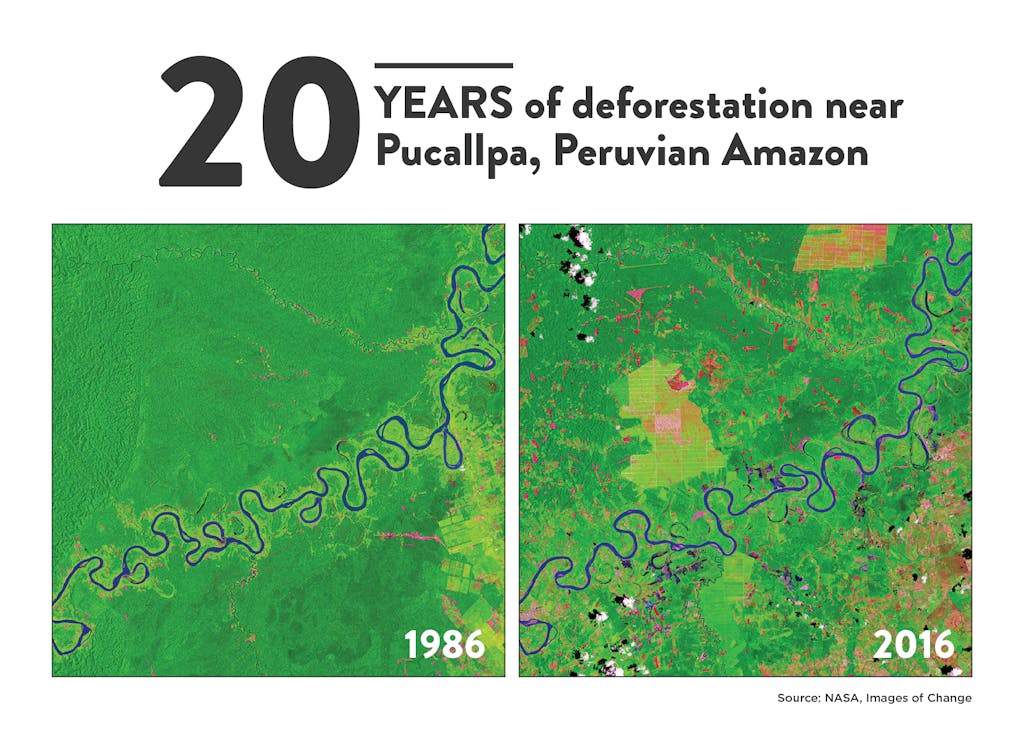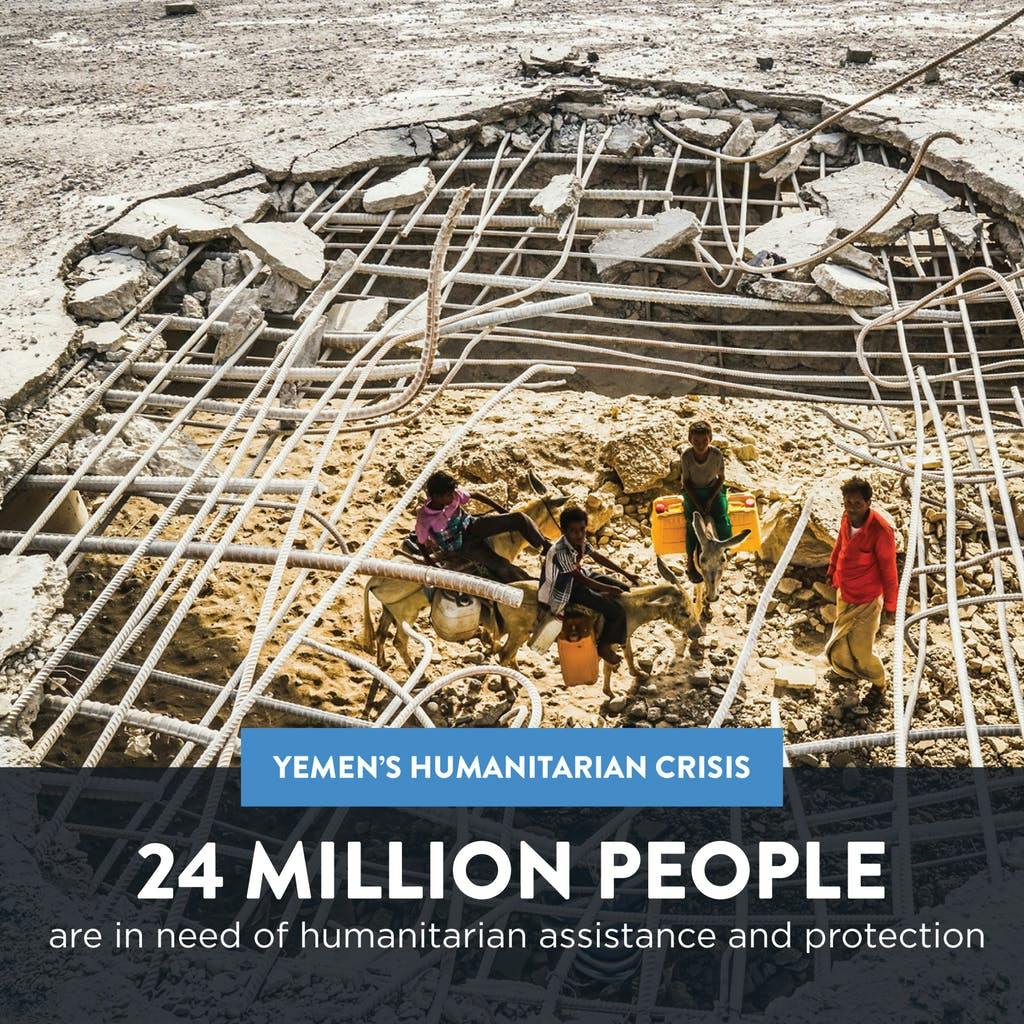Update: Read 5 Global Issues to Watch in 2020
As expected, 2018 was a doozy for international cooperation and global development, featuring a mixture of highs, lows, and anxiety (at unhealthy doses) all around. Threats to international cooperation posed risks to tackling pressing challenges. But bright spots emerged, including the rise of new and refreshing voices standing up for collective action and global progress. In the face of this uncertainty, 2019 will be a critical year for shared action on issues that affect us all and require working together.
Here are six global issues to watch:
1. Climate Change Reality Takes Hold – What’s Next for Ambition?
From flooding to fires, climate change wreaked havoc on people’s health and livelihoods around the globe in 2018. In October, the Intergovernmental Panel on Climate Change (IPCC) warned that greenhouse gas emissions must be drastically reduced within the next 12 years to stay within 1.5°C of warming above pre-industrial levels and avert the worst impacts of climate change. While countries made progress late last year on the rules governing the Paris Agreement, global emissions continued to rise, making clear the need for enhanced climate action by 2020 – when countries need to restate or raise the ambition of their Paris Agreement pledges.
The critical moment for enhanced climate ambition in 2019 will be the UN Secretary-General’s Climate Summit, which he will host for heads of state and leaders from other sectors during the opening of the UN General Assembly in September. Centered around the theme “A Race We Can Win, A Race We Must Win,” the summit will aim to reinforce the risks of inaction, highlight promising examples of partnership, and double down on efforts to implement the Paris Agreement and transition to a low-carbon economy. Climate action will also feature prominently on the agendas of both the G20 Summit, hosted by Japan in June, and the G7 Summit to be hosted by France in August. And, of course, the year will close with the annual UN-hosted climate negotiations, to be hosted by Chile.
Science will continue to play a critical role in the climate conversation in 2019. The IPCC will publish two new reports – one with a focus on the intersection between climate change and land; the other on the interplay between climate and the ocean and cryosphere. The recently formed Global Commission on Adaptation, led by former UN Secretary-General Ban-Ki-moon, Bill Gates, and World Bank CEO Kristalina Georgieva, will launch its first report on the need and opportunity for climate adaptation in the fall. By providing a deeper evidence base on three critical climate issues – land, oceans, and adaptation – these reports will further inject science and data into climate action.

2019 will also see continued momentum from local leaders following last September’s Global Climate Action Summit. In the United States, the U.S. Climate Alliance is likely to welcome several new governors to its bipartisan group of state leaders dedicated to implementing the Paris Agreement, thereby deepening and broadening climate action in the U.S. despite inaction at the federal level. Climate change will also receive a jolt of new attention from the new Congress, including through the creation of a new select committee in the House of Representatives that will be devoted to the issue. In short, expect 2019 to be a make-or-break year for increasing ambition on climate action.
2. The Sustainable Development Goals at Four Years: Taking Stock
In 2018, organizations and communities launched several exciting initiatives to track progress on the Sustainable Development Goals (SDGs) and build ambition throughout 2019. These included a more empowered youth effort, the rise of local groups including cities (like New York issuing the first ever Voluntary Local Review) and community foundations, and the business and investor community stepping up.
2019 will be a test to see how these new efforts take root. Despite some early signs of progress in a number of areas, one thing is clear: We are currently not on track to meet our goals or targets by 2030. Initial research even suggests that, based on current trajectories, we could leave behind millions, and on some issues billions, of people by 2030. Fragility and conflict further exacerbate these worrying trajectories, with current trends suggesting even further concentration of poverty in areas struggling to build sustainable peace. We’re also getting a better understanding of the closely intertwined relationship between climate change and obstacles to achieving the SDGs. Now is the time to drill down into the specific regions and issues where we need to do better. Timely, useful data is essential, as well as leveraging our shared power to partner in new and innovative ways.
A critical moment for assessing SDG progress will come in July, when the High-level Political Forum on Sustainable Development (HLPF) convenes at the UN and 51 Member States report on their countries’ progress. This year’s theme of “empowering people and ensuring inclusiveness and equality” couldn’t be more relevant, as polarization and inequality represent significant threats to achieving the SDGs and will also be a priority focus of France’s G7 presidency in 2019.
The July forum will set the stage for a major moment in September during the annual UN General Assembly, when for the first time since the SDGs were agreed, heads of state will come together in support of the SDGs and to take stock of where we are and what is needed to make progress on this ambitious agenda. This event will take place the same week as the Secretary-General holds his Climate Summit, aimed at raising ambition and action to make urgent progress on climate. These two events, along with a high-level meeting on Universal Health Coverage also taking place that week, provide a critical opportunity to reinforce the connections between climate and sustainable development.
3. Walking the Walk on Financing a Better Future
Much of the conversation around the SDGs and the Paris Agreement has focused on the scale of the challenge, with an estimated $5-7 trillion in annual investments needed. And while we have seen a number of encouraging examples of action, we need to do more to reorient private capital flows toward building resilience, investing in fragile and conflict-affected settings, and ensuring that regulatory frameworks are structured to incentivize and de-risk investments.

The Secretary-General’s Strategy for Financing the 2030 Agenda, launched at a High-Level Meeting on Financing during the 2018 UN General Assembly, focuses on policy and economic alignment, regional and country-level implementation, and digitization and technology for financial inclusion.
Throughout 2019, the Secretary-General will work with UN agencies and Member States, and in partnership with the private sector and civil society, to operationalize this strategy and advance actionable outcomes in each pillar. The UN General Assembly will convene a High-Level Dialogue on Financing for Development in September 2019, which will be a key moment to garner political commitments to advance this agenda.
2019 will also feature several important financing conversations for global health, with a significant milestone in February at the African Union Summit on domestic resources, and in October for the Global Fund. Additionally, there are expected new funding commitments to the Global Polio Eradication Initiative and Global Financing Facility, as well as continued momentum from the investor community at the G7 and G20 Summits, which will be critical to broader efforts around SDG and climate financing.
The test is whether these pronouncements and commitments translate to real investments: Will 2019 be one of walking the walk? Next year will be a test for financing, particularly if current stock market swings give way to a global economic slowdown. Companies, investors, governments, and partners should be doing more to steward and deepen efforts that focus on accountability and that bend the curve in the most critical areas.
4. A More Modern and Effective UN
Since he began his tenure, UN Secretary-General António Guterres has prioritized modernization and reform of the organization, and in 2018 he ushered through three related strands of reform: peace and security, management, and the development system. Together they represent one of the most significant structural changes in the history of the UN. The changes will impact every UN office, regional commission, and field operation. The rationale for reform is persuasive: The UN must adapt for greater impact and to be better able to anticipate and respond to the world of today and tomorrow. That requires a more modern UN that can deliver in the field and model efficient, impactful multilateralism.
The Secretary-General and the UN will now turn to implementation of these reforms. From January 2019, the UN will have:
- Development System Repositioning: impartial and empowered resident coordinators in countries across the world tasked with supporting the delivery of the Sustainable Development Goals.
- Peace and Security Restructuring: two new departments (Department of Political and Peacebuilding Affairs and Department of Peace Operations) allowing the UN to better focus on preventing conflict and sustaining peace.
- Management Reform: two new departments (Department of Management Strategy, Policy and Compliance and Department of Operational Support) better able to support the delivery of UN mandates on the ground.
The reform strands were supplemented by additional elements:
- The Secretary-General’s strategy on gender equality achieved parity in the Secretary-General’s Senior Management Group and among appointed Resident Coordinators.
- The Action for Peacekeeping agenda will better allow peacekeeping missions to deliver on their protection mandates and contribute to long-term, sustainable peace.
- A youth strategy elevated the role of a younger, more empowered generation.
- A WHO-Civil Society Task Team launched new recommendations to strengthen cooperation between the World Health Organization and civil society organizations.
- And the High-Level Panel on Digital Cooperation was established to highlight the ways in which digital technologies can have a transformative impact, and ways to mitigate unintended consequences they posit.
In 2019, the Secretary-General and the UN will turn to implementation of these reforms. Indeed, the efficacy of these modernization efforts will be judged not by how the international body forms or regroups offices but rather how they improve the impact that is being made to global peace, stability, and progress.
This first year of implementation comes against a backdrop of heightened risks to global cooperation writ large, including for the UN itself. How these changes better enable the UN to adapt and evolve to a world that is changing at breakneck pace is key.
5. Overcoming Inequalities and Defending Human Rights
While the UN celebrated the 70th anniversary of the Universal Declaration of Human Rights in 2018, the world also saw its 12th consecutive year of decline in global freedom, with 71 countries suffering net declines in political and civil liberties. Progress toward gender equality has stalled overall, while movements like #MeToo and #TimesUp continue to expose the scale and severity of discrimination and violence facing girls and women. In many places, girls and women’s rights are deteriorating and harmful laws deny girls and women justice and dignity. The global pay gap will now take over 200 years to close.

2019 will be a pivotal year to show that the world is serious about addressing inequalities, but also understanding how political and social movements are fueled by the divides between the haves and the have nots.
Importantly, there will be opportunities to shine a light on inequalities and take important steps:
- Inequality will be a goal under review at this year’s SDG review moment in July.
- The International Conference on Population and Development convenes with a focus on putting human rights at the center of development.
- The 63rd session of the Commission on the Status of Women meets at the UN.
- France aligns G7 efforts around tackling a range of inequalities.
- The UN Human Rights Council will convene a rare intersessional dialogue on good governance and the implementation of the SDGs.
- And the U.S. celebrates the 100th anniversary of Senate passage of the 19th Amendment, which granted women the right to vote
But all of this will be a lost opportunity if it is not accompanied by meaningful commitments to address global and local inequalities, and at the same time protect and preserve human rights around the world.
That’s why the UN and its partners should re-affirm commitment to defending human rights around the world. As Secretary-General Guterres laid out at the first annual Paris Peace Forum, “The fight against global inequalities must serve as the guiding compass for the work of multilateral organizations.”
While there is reason to celebrate with the recent adoption of the UN’s Global Compact for Migration by more than 160 countries, as well as the appointment of Michelle Bachelet as the new UN High Commissioner for Human Rights, there is also cause for concern as even more countries risk backsliding on progress and infringing on the rights of minority groups. Considerable attention will be needed to ensure that human rights are front and center, and that the international community is – in the words of Article 1 of the Universal Declaration of Human Rights – living up to the promise that “All human beings are born free and equal in dignity and rights.”
6. Responding to Humanitarian Crises
Conflict and the increase of natural disasters continue to impede development, peace, and security worldwide – dimming the prospects of achieving the SDGs in these fragile environments. The 2019 Global Humanitarian Overview reveals an astonishing severity in humanitarian crises, with the number of internally displaced people by conflict in Syria, Colombia, and the Democratic Republic of the Congo alone reaching almost 20 million.
The report estimates that protracted conflicts in Nigeria, Somalia, South Sudan, and Yemen will continue to cause displacement and erode resilience. In total, nearly 132 million people need humanitarian assistance in 2019 at an estimated cost of at least $21.9 billion.
 International organizations, private companies, and civil society are working together in innovative ways to respond, including through the Famine Action Mechanism, the first global mechanism – launched by the UN, World Bank, the International Red Cross, and other global partners – to support upstream interventions in famine prevention, preparedness, and early action.
International organizations, private companies, and civil society are working together in innovative ways to respond, including through the Famine Action Mechanism, the first global mechanism – launched by the UN, World Bank, the International Red Cross, and other global partners – to support upstream interventions in famine prevention, preparedness, and early action.
The Secretary-General has made prevention and peacebuilding key priorities since his first day in office. This includes reform of the peace and security architecture. Additionally, the UN is taking early steps to strengthen its financing mechanisms, including the Central Emergency Response Fund, to be more proactive and to implement new financing mechanisms such as pooled funds to allow for more flexibility in resource allocation. But more needs to be done urgently to address the scale of the challenge. As Yemen is on the brink of facing the world’s worst famine in 2019, with more than 13 million people at risk of starvation, it is critical that the international community continues work to alleviate the suffering of the most vulnerable, and to find peaceful means to end conflict and humanitarian disasters.
The world is at a defining moment for collective action. As political and economic turmoil, protracted conflict, climate change, and inequalities continue to exacerbate global instability, the post-war institutions set up for bolstering international cooperation – and the central foundations for mobilizing action to tackle today’s most pressing challenges – are also increasingly under threat. Indeed, as the Secretary-General recently stated, “The multilateralism that is now part of our daily life is at risk of disintegrating just when it is most needed.”
At the same time, new grassroots movements, empowered citizens, bold moves from the private sector, and more, signal strong support for global cooperation.
If 2018 taught us anything, it is that partnerships, collaboration, and international cooperation are the bedrock of global progress. In 2019, we must remember that in an age of ever-complex and interconnected challenges and risks, we are greater than the sum of our parts.



 View All Blog Posts
View All Blog Posts



